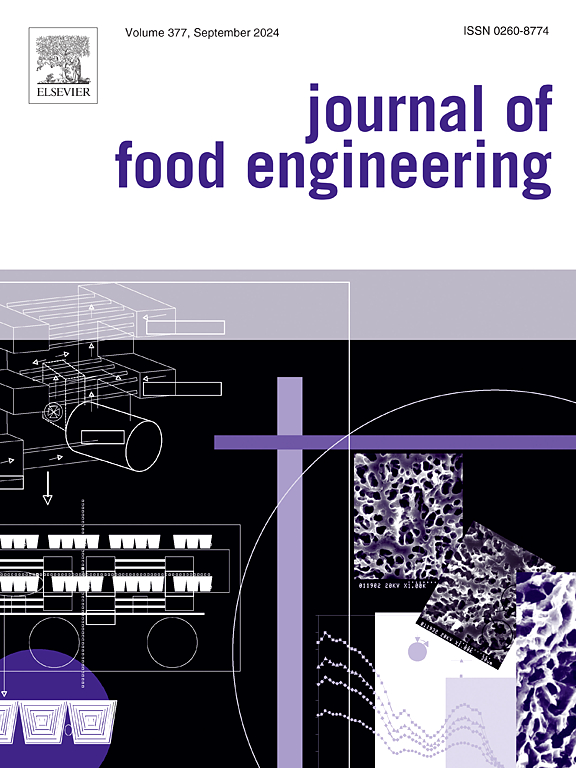基于芙蓉花青素连续溶液铸造的比色传感器
IF 5.3
2区 农林科学
Q1 ENGINEERING, CHEMICAL
引用次数: 0
摘要
利用超声辅助技术从干燥的芙蓉花瓣中提取花青素,并将其与玉米淀粉/蜂蜡薄膜结合,作为肉类腐败的比色传感器。传感器是通过中试规模的连续溶液铸造技术生产的。蜂蜡和提取物的掺入使材料的拉伸强度和弹性模量分别降低了84%和85%,断裂伸长率提高了319%,水蒸气阻隔率提高了32%。薄膜的比色性能主要取决于萃取物,特别是它们的感官能力。当氨浓度低于105 mg m−2时,薄膜的颜色发生了迅速而明显的变化,并在至少10分钟后趋于稳定。此外,当暴露于肉类腐败挥发物6小时或更短时间内,薄膜的颜色发生了轻微的变化。因此,在本研究中获得的特性,对于由连续溶液铸造技术生产的薄膜,允许它们用作智能包装的比色传感器。本文章由计算机程序翻译,如有差异,请以英文原文为准。
Colorimetric sensors based on hibiscus anthocyanins produced by continuous solution casting
Anthocyanins from dried hibiscus petals were efficiently extracted by an ultrasound-assisted technique and incorporated to cornstarch/beeswax films to be used as colorimetric sensors for meat spoilage. The sensors were produced by a pilot-scale continuous solution casting technique. The incorporation of beeswax and the extract reduced by 84% and 85% the tensile strength and elastic modulus, respectively, increased the elongation at break by 319% and the water vapor barrier by 32%. The colorimetric properties of the films were due to the extract, main and specifically their sensory capacities. When exposed to ammonia concentrations lower than 105 mg m−2, the films rapidly and perceptively changed their color, stabilizing that change after at least 10 min. Moreover, the films slightly changed their color when exposed to meat spoilage volatiles for 6 h or less. Therefore, the properties achieved in this study, for the films produced by the continuous solution casting technique, allow them to be used as colorimetric sensors for intelligent packaging.
求助全文
通过发布文献求助,成功后即可免费获取论文全文。
去求助
来源期刊

Journal of Food Engineering
工程技术-工程:化工
CiteScore
11.80
自引率
5.50%
发文量
275
审稿时长
24 days
期刊介绍:
The journal publishes original research and review papers on any subject at the interface between food and engineering, particularly those of relevance to industry, including:
Engineering properties of foods, food physics and physical chemistry; processing, measurement, control, packaging, storage and distribution; engineering aspects of the design and production of novel foods and of food service and catering; design and operation of food processes, plant and equipment; economics of food engineering, including the economics of alternative processes.
Accounts of food engineering achievements are of particular value.
 求助内容:
求助内容: 应助结果提醒方式:
应助结果提醒方式:


